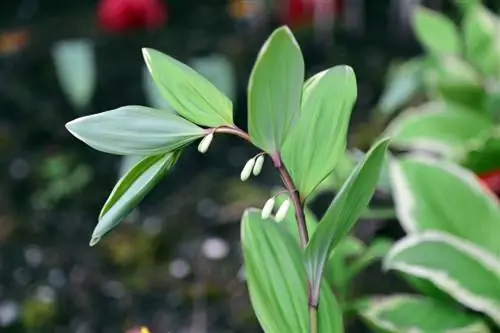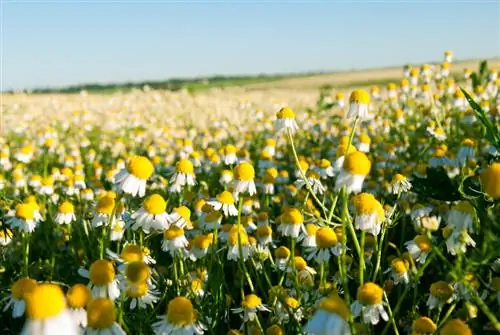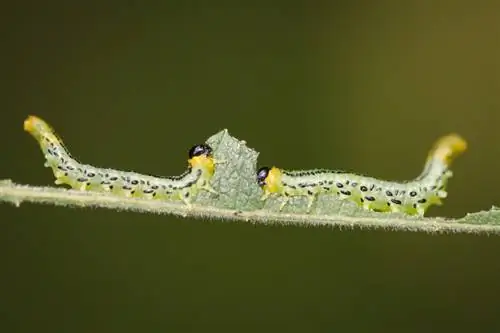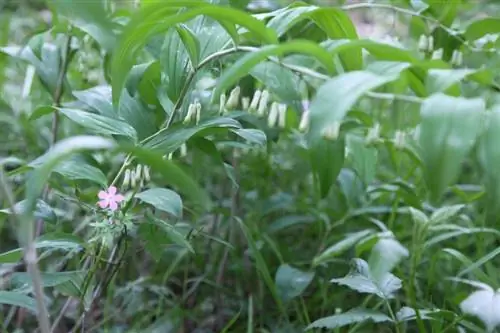- Author admin [email protected].
- Public 2023-12-16 16:46.
- Last modified 2025-01-23 11:20.
The Solomon's seal (Polygonatum odoratum) is also often colloquially referred to as sweet-smelling white root, although the plant is often confused with the similarly growing multi-flowered white root. The plant is often planted in gardens because of its unusual shape, but is also extremely poisonous.
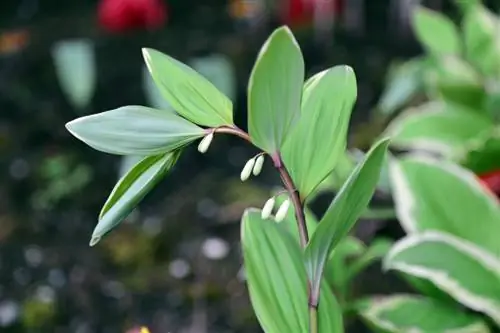
How do I care for the Solomon's seal in the garden?
The Solomon's seal (Polygonatum odoratum) is a poisonous ornamental plant that thrives in shady and semi-shady areas. In the garden it needs regular water supply, spring fertilization and root division to reproduce. Be careful when infested with Solomon's seal sawfly larvae.
Ornamental plant with simple beauty
The Solomon's seal has its special name because the dying plant material leaves a seal-like scar on the perennial rootstock in autumn. In nature, the plant is characterized by a herbaceous growth with a height of around 15 to 50 centimeters, but specimens cultivated in the garden can rarely grow up to 1 meter high. The delicate white flowers in an elongated bell shape hang in a gently curved arc from the tubular perigon with its fused bracts. After flowering, black, frosted berries with 7 to 9 seeds each are formed.
Between mythology and symptoms of poisoning
The real Solomon's seal is considered a real miracle plant in mythology. In many fairy tales and legends, this plant is the miraculous means of unlocking doors and opening springs of bare rock. In reality, the Real Solomon's Seal was used in natural medicine in various cultures as an active ingredient with an emetic effect. The unusual plant should be treated with some caution as an ornamental plant, as all parts of the plant contain homoserine lactone, chelidonic acid and various saponins. The concentration of poisons is highest in the ripe berries, but consumption usually only causes mild symptoms of poisoning with diarrhea, nausea and vomiting.
Planting Solomon's Seal in your own garden
In the garden, shady areas on the north side of the house or under trees often pose a problem, as the ground there is often difficult to grow green. The Solomon's seal, on the other hand, prefers to grow in shady and semi-shady locations. Please note the following care instructions:
- Young plants should never dry out completely
- After a few years of standing, stocks can be easily propagated by root division
- Fertilizer is ideally applied when budding in spring
- Flowered stems should only be cut off in autumn so that the plants are not unnecessarily weakened
Tip
The Solomon's seal is unfortunately very susceptible to infestation with the larvae of the Solomon's seal sawfly. This can be recognized by gnawed leaves, where only the leaf veins remain. The caterpillars should be collected manually if possible; if necessary, an insecticide from a specialist retailer can also be used.

